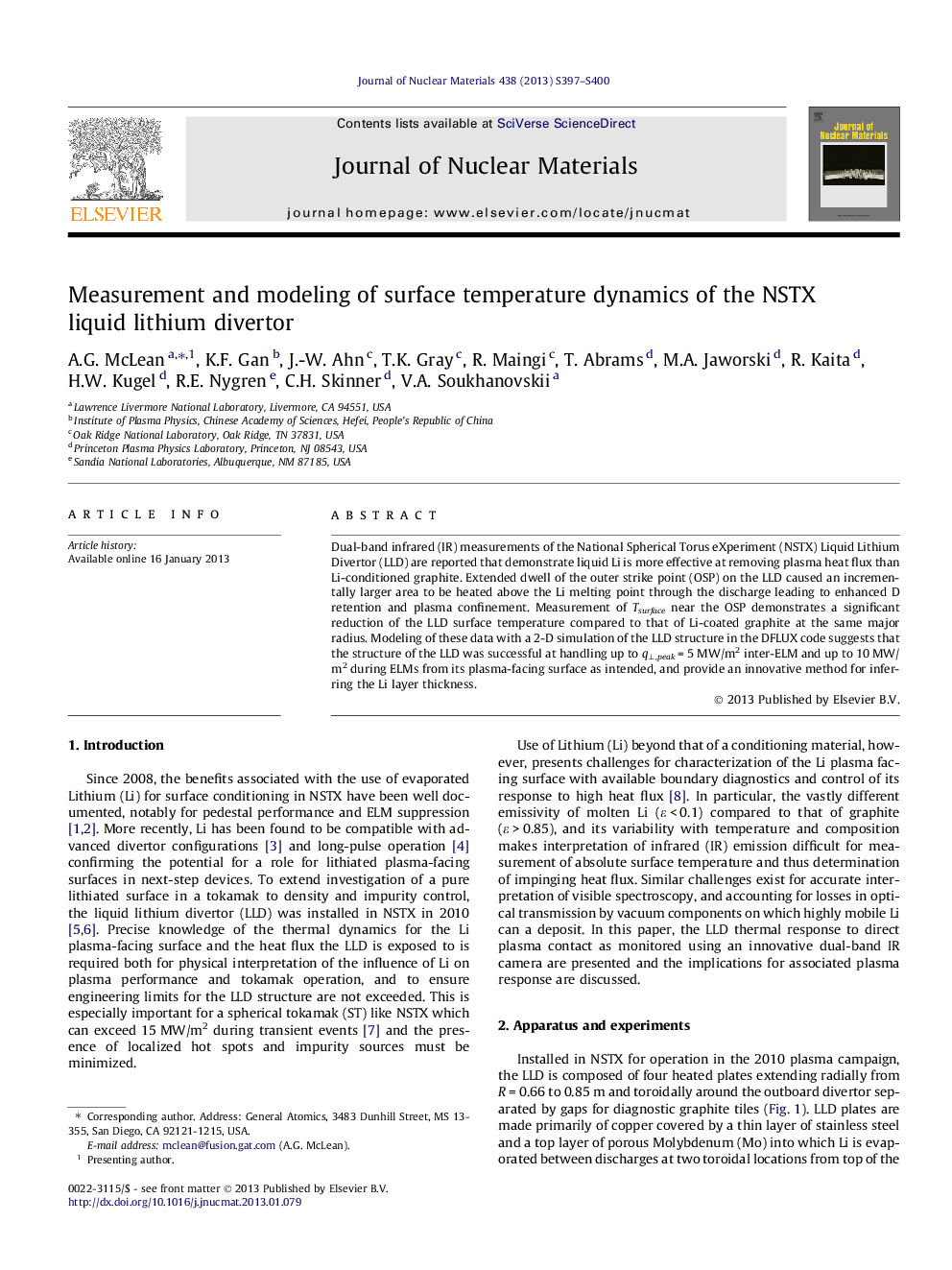| Article ID | Journal | Published Year | Pages | File Type |
|---|---|---|---|---|
| 10645019 | Journal of Nuclear Materials | 2013 | 4 Pages |
Abstract
Dual-band infrared (IR) measurements of the National Spherical Torus eXperiment (NSTX) Liquid Lithium Divertor (LLD) are reported that demonstrate liquid Li is more effective at removing plasma heat flux than Li-conditioned graphite. Extended dwell of the outer strike point (OSP) on the LLD caused an incrementally larger area to be heated above the Li melting point through the discharge leading to enhanced D retention and plasma confinement. Measurement of Tsurface near the OSP demonstrates a significant reduction of the LLD surface temperature compared to that of Li-coated graphite at the same major radius. Modeling of these data with a 2-D simulation of the LLD structure in the DFLUX code suggests that the structure of the LLD was successful at handling up to qâ¥,peak = 5 MW/m2 inter-ELM and up to 10 MW/m2 during ELMs from its plasma-facing surface as intended, and provide an innovative method for inferring the Li layer thickness.
Related Topics
Physical Sciences and Engineering
Energy
Nuclear Energy and Engineering
Authors
A.G. McLean, K.F. Gan, J.-W. Ahn, T.K. Gray, R. Maingi, T. Abrams, M.A. Jaworski, R. Kaita, H.W. Kugel, R.E. Nygren, C.H. Skinner, V.A. Soukhanovskii,
